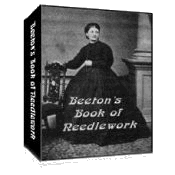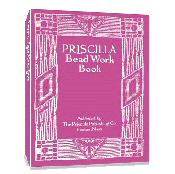[]Subscribe To This Site
How to Work the Rope Stitch
This stitch is similar to Crewel and Stem Stitch in appearance, and only differs from those stitches in being worked form the top of the material downwards, instead of from the bottom upwards. It is also known as Point de Cable and Point de Cote. It makes a beautiful outline. The effect is not unlike that of a couched cord. It is moreover strong and therefore appropriate where a couched cord would not be.
To work:

Trace an outline of the line to be covered, bring the needle from the back of material at the top of the line on the left side, put it in slightly slanting on the right-hand side, and bring it out on the left-hand side a little below the last stitch made (see Fig 1) continue to cover the traced line with these slanting stitches. Rope Stitch is worked as a perfectly even and regular line of slanting stitches, and closer together than Crewel Stitch.

Another way to describe how to work this stitch is: The first stitch is taken just as the common Chain Stitch is made, but in the second stitch the needle is inserted just above and to the left of the preceding loop, instead of within it (See Fig. 2). The loop is formed as in the common chain, but the needle is inserted each time just above the loop. This gives a heavy twisted effect, which is much richer than any of the other Chain Stitches.
Return to top of Rope Stitch page.
Return to Embroidery Stitches page.
Return to Home page.



 433 pages!
433 pages!

